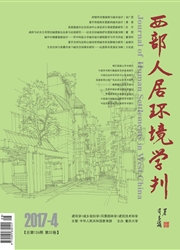

 中文摘要:
中文摘要:
本文基于重庆市2010-2013年地面机动车流量数据及2014年地铁各站客流量数据,应用空间句法分析软件,分析了重庆城市大区域尺度范围内地面及地铁流量与空间线段地图分析结果的关联,验证了空间句法工具对城市大尺度范围流量分析的适用性。另外,基于地铁流量的实证数据,本研究重点对比测试了用空间句法分析地铁的两种建模方式:将地铁线路独立处理的“分离式”模型和将地铁线路纳入线段地图分析的“一体化”模型,发现“一体化”模型在分析站间截面流量时效果明显更好,但在分析进出站客流量时仅比“分离式”模型略好。作为结论,本文对地面和地铁两个问题的研究分别引出了连续运动和超链接两种空间机制,二者的共同作用使空间句法得以在超出视线和步行范围的大区域尺度上对城市进行有效分析。
 英文摘要:
英文摘要:
This paper presents a space syntax analysis on the lfow of vehicle from 2010-2013 and metro lfow data on 2014 in Chongqing. The research veriifes the effect of space syntax analysis at large scale. Furthermore, this paper emphasizes the analysis of metro flow data by comparing to the way of modelling in space syntax: a separated model and an integrated model. The result shows the integrated model clearly works better when analyzing the lfow intensity between stations, but only slightly better when analyzing the lfow of people coming in and out of the station. As a conclusion, this paper claims two spatial mechanisms that establish the validity of the space syntax model at large scale: the continuous movement and hyper-link spatial mechanisms.
 同期刊论文项目
同期刊论文项目
 同项目期刊论文
同项目期刊论文
 期刊信息
期刊信息
